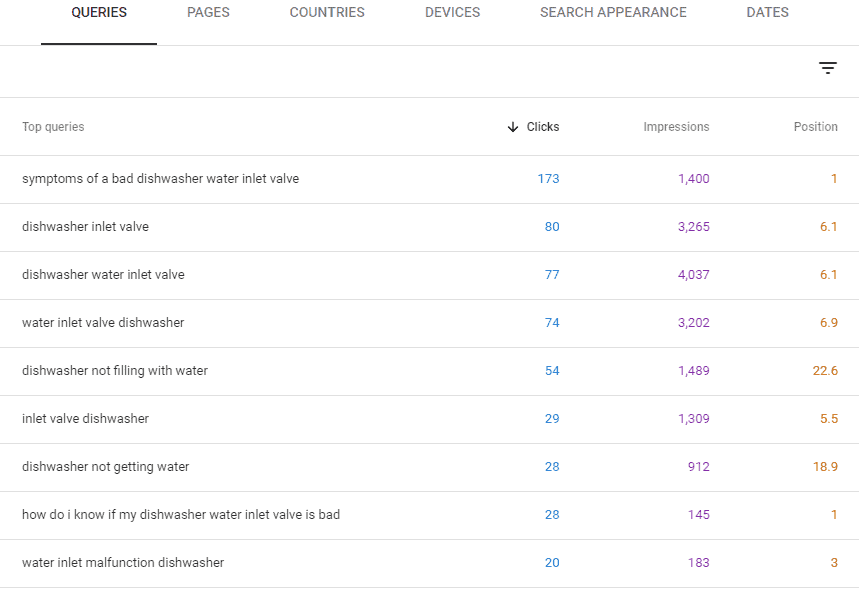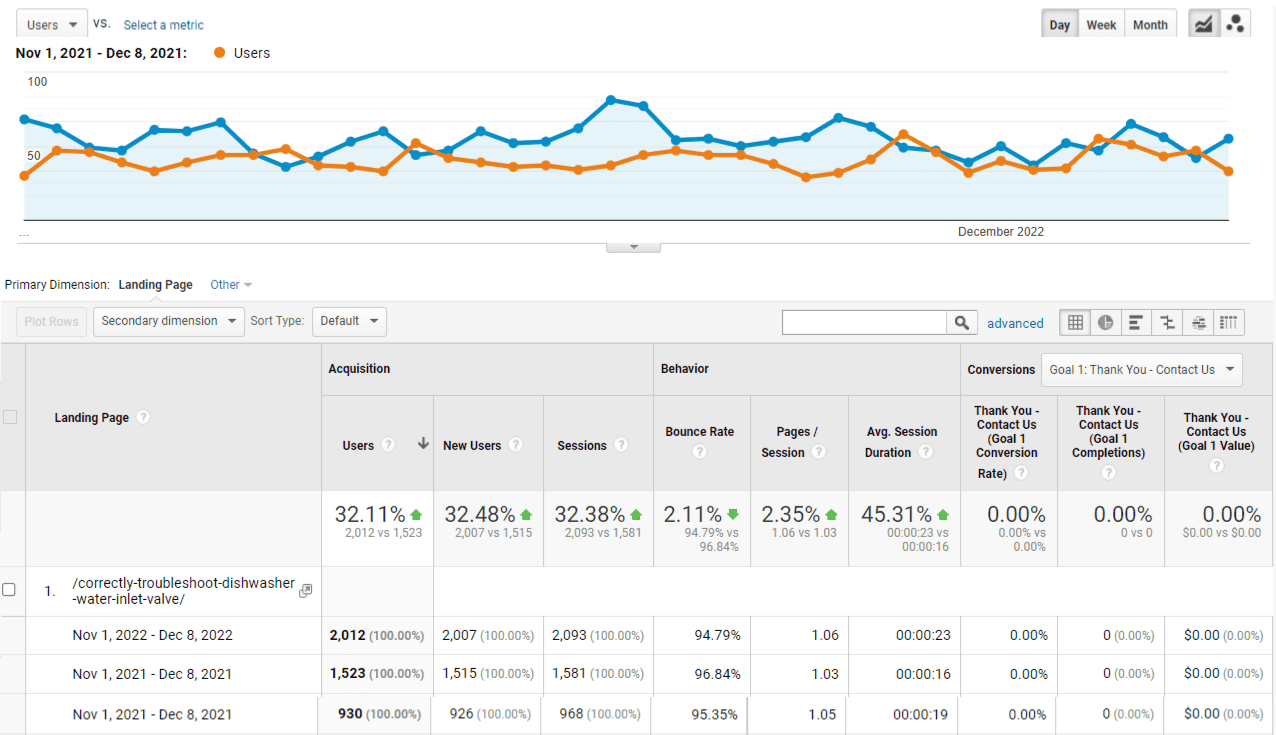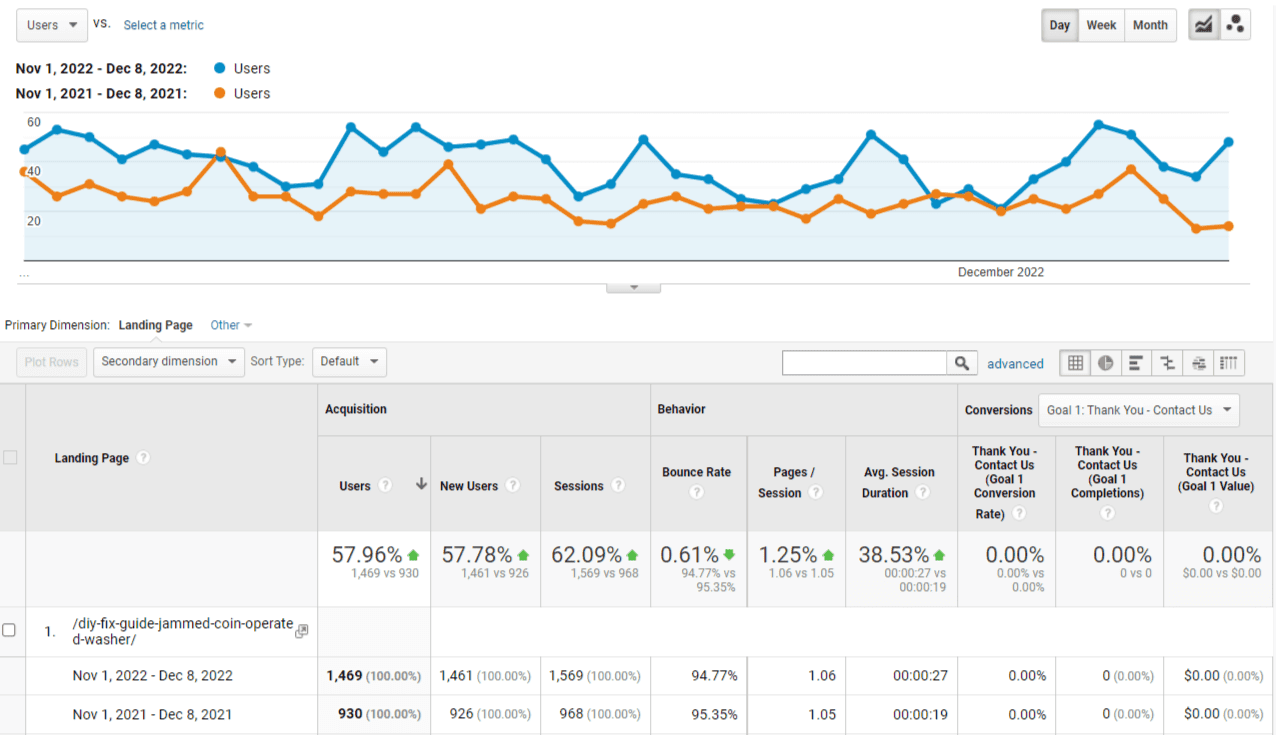How to Re-Optimize Old Content for Killer SEO

The 80/20 rule comes from Vilfredo Pareto, an Italian philosopher and economist.
Paraphrased:
80% of results come from just 20% of the action.
In a corporate office, 20% of the workforce may produce 80% of the work. Having spent a decade-plus in corporate America, I believe Fredo was on to something.
On an e-commerce site, 20% of products may account for 80% of the sales.
And on a local business website, 20% of the pages may drive 80% of the organic traffic.
Blogs Are the Traffic Heroes
The high-traffic pages tend to be blogs with low conversion rates. Because they generate so much traffic, they’re among the most valuable pages on a local site. Conversion rate be damned!
So why not go nuts with the blogs? They’re such money-makers!
Some are, and some aren’t. You never know when a blog will strike gold. In blogging, the rule is more like 90-10: 10% of the blogs do the heavy lifting, while 90% kind of sit there.
Plus, without occasional updates to keep it fresh and relevant, even a high-performing blog loses its edge. Traffic declines.
What’s a blogger to do? Throw in the towel? Work feverishly on a new batch of blogs, of which only 10% will hit?
No, the better option for a valuable but declining page is a content update, and not just any old update, but a complete refresh or content re-optimization.
You’re building on the blog’s existing SEO foundation and expanding it by 30-50%, maybe more.
A 600-word blog driving 30 daily visits may drive 45 after your update, and if copy is engaging, you’ll see a lift in conversions, too.
The technique I’m about to describe is equally valid for any web page, including information, landing, and even home pages.
Keyword Research vs. Actual Keyword Rank
“All content starts with keyword research!” That’s the standard SEO advice. And while I endorse keyword research for a content initiative, it’s less useful for established content. You see, in the Search Console, Google already tells me what the keywords are.

These are the keywords driving traffic to a blog about dishwasher inlet valves.
So I have two choices.
- I can be greedy, aim for much bigger keywords the page doesn’t rank for, and strike it rich (unlikely) or lose everything (the likely scenario).
- Or I can take the keywords that already drive traffic, check their difficulty and search volume, enhance the page for a select few keywords within reach, and enrich the content to cast a wider “keyword net.”
I choose Door #2.
So to optimize, I might place “symptoms of a bad dishwasher inlet valve” in an h2, create other targeted headings, and sprinkle long-tail keywords throughout the copy.
I’d add relevant details, flesh out paragraphs to answer potential questions, and maybe even include FAQs for additional content.
The page will never rank #1 for “dishwasher inlet valve.” Still, it already ranks for a cluster of long-tail keywords, and that’s the whole point of the content exercise. It strengthens the page for multiple keywords with real traffic potential — not pie-in-the-sky keywords the SEO wonks sent to you in an email.
The Results May Surprise You
Does it work? Like a charm, if you do it right! Below are year-over-year organic traffic comparisons for two blogs I re-optimized in the spring of 2022.

YOY traffic for a re-optimized blog about dishwasher inlet valves is up 32%. Engagement is up as well.

YOY traffic for a re-optimized blog about coin laundries is up 57%.
More traffic, more sessions, lower bounce rates, and improved session duration! What’s not to like?
These two blogs generate more leads than any service page on their website. Not bad for creaky five-year-old content with a new veneer!
Simple Rules for Optimizing Old Content
- Always check content for originality. Copyscape will tell you if the content is plagiarized or duplicate, in which case it’s not worth optimizing.
- Building out existing content typically yields better results than paring it down. Fewer words and paragraphs give you fewer long-tail opportunities.
- Edit well-written copy with a light hand. Add headings, a paragraph here and there, bulleted lists, etc. But don’t blow up something that already delivers great results.
- Rewrite poorly written, repetitious, or confusing copy, preserving the keyword themes of the original page.
- Never stuff the copy with keywords or engage in SEO “happy talk.” Copy should be helpful and concise but search-optimized.
- Write for humans first and search engine second. But always keep in mind the keyword theme of the page. Stay on track. If you find yourself digressing, spin the less relevant content into a new blog.
- Insert a call to action if the page doesn’t have one. A Contact Us button will do.
When Is It Time for a Refresh?
It’s easy enough to recognize the signs of an underperforming or declining page.
- The page brings in substantially less organic traffic than it did a year ago.
- No one has touched the page in over three years, even for minor improvements.
- The page ranks just outside the top 10 for several significant keywords.
- The page lacks keyword richness and diversity around the dominant keyword theme.
- The page is poorly written, and yet it generates traffic.
Conclusion
Carry out your content re-optimization wisely and carefully; you may discover hidden gems on your website and breathe new life into an old blog or two.
Well-written content takes mere minutes to optimize, so when you repeat the exercise, maybe in two years, it will be much easier.
Some pages may not be worth saving. Consolidate or redirect them, but give them a fair shot before you do.
I’ve resurrected many a page from the grave, including unfinished blogs that were never published and sat for years in “drafts.” While they’re not in the top 10% of traffic, they contribute to a site’s overall authority and incremental traffic.
About Culture Cube Digital Marketing
Culture Cube specializes in digital marketing for local businesses. Our clients include plumbers, HVAC installers, appliance repair companies, and local newspapers.
We offer the expertise of a large agency at small agency rates.
Because we specialize, we’re better qualified to promote your small business and create the most effective campaigns.
We don’t waste client money on lavish offices, fancy equipment, costly business trips, and endless meetings. We pass our savings on to you and welcome you as a partner more than a client.
Please contact us to learn what we can do for you.

Peter Losh is the SEO Director of Culture Cube Marketing in Upland, California. He's also a de facto UX designer, site builder, and content creator. Unlike most folks in the SEO biz, he works directly on the sites he optimizes, having witnessed the effects of recommendations that go ignored or misunderstood (in previous gigs).
Peter has worked on websites since the salad days of the internet, first as a graphic artist and web designer at the Centers for Disease Control. Then came several years of freelance web development, SEO and e-commerce management for business sites of various sizes, and ultimately a 10-year stint as the sole SEO Manager of PartyCity.com.
In his spare time, he enjoys classic film, classical music, and classic comebacks. And cats.
Professional Work Experience
- Search engine optimization
- Ecommerce management
- Conversion rate optimization
- UX design and analysis
- Copywriting and training
- E-mail campaign design
- Web design and development
- Graphic design